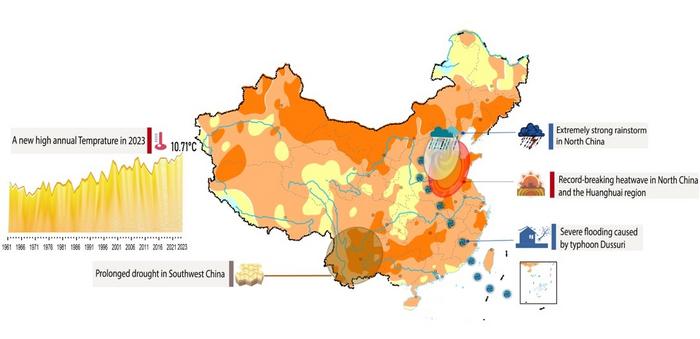Climate is a major factor affecting economic and social outcomes. In China, the country’s National Climate Center releases an annual climate report that comprehensively covers China’s achievements and progress that year in climate monitoring and impact assessment. This series of reports has been published in Atmospheric and Oceanic Science Letters for six consecutive years since 2019, and the “State of China’s climate in 2023” is now available.

Credit: JIN Xin
Climate is a major factor affecting economic and social outcomes. In China, the country’s National Climate Center releases an annual climate report that comprehensively covers China’s achievements and progress that year in climate monitoring and impact assessment. This series of reports has been published in Atmospheric and Oceanic Science Letters for six consecutive years since 2019, and the “State of China’s climate in 2023” is now available.
The current report provides a summary of the main climate features and high-impact weather and climate events in China in 2023.
“The overall climate condition in 2023 over China was worse than normal, presenting a warm–dry climate with the highest annual mean temperature and second-highest number of hot days in history,” says the first author of the study, Sun Linhai.
“Both the annual and flood season precipitation was the second-lowest since 2012, with the anomalies in the central and eastern parts of China exhibiting a pattern of more in central areas and less in the north and south”.
In 2023, China suffered seriously from heavy precipitation events and floods, despite less annual precipitation and fewer rainy days. During July–August, a rare, extremely strong rainstorm caused by Typhoon Dussuri hit Beijing, Tianjin, and Hebei, causing an abrupt alteration from drought to flood conditions in North China. By contrast, Southwest China experienced prolonged drought from winter to spring. In early summer, North China and the Huanghuai region experienced the strongest high-temperature process since 1961. Besides, there were more cold-air processes and spring sand-dust events attacking China.
Journal
Atmospheric and Oceanic Science Letters



